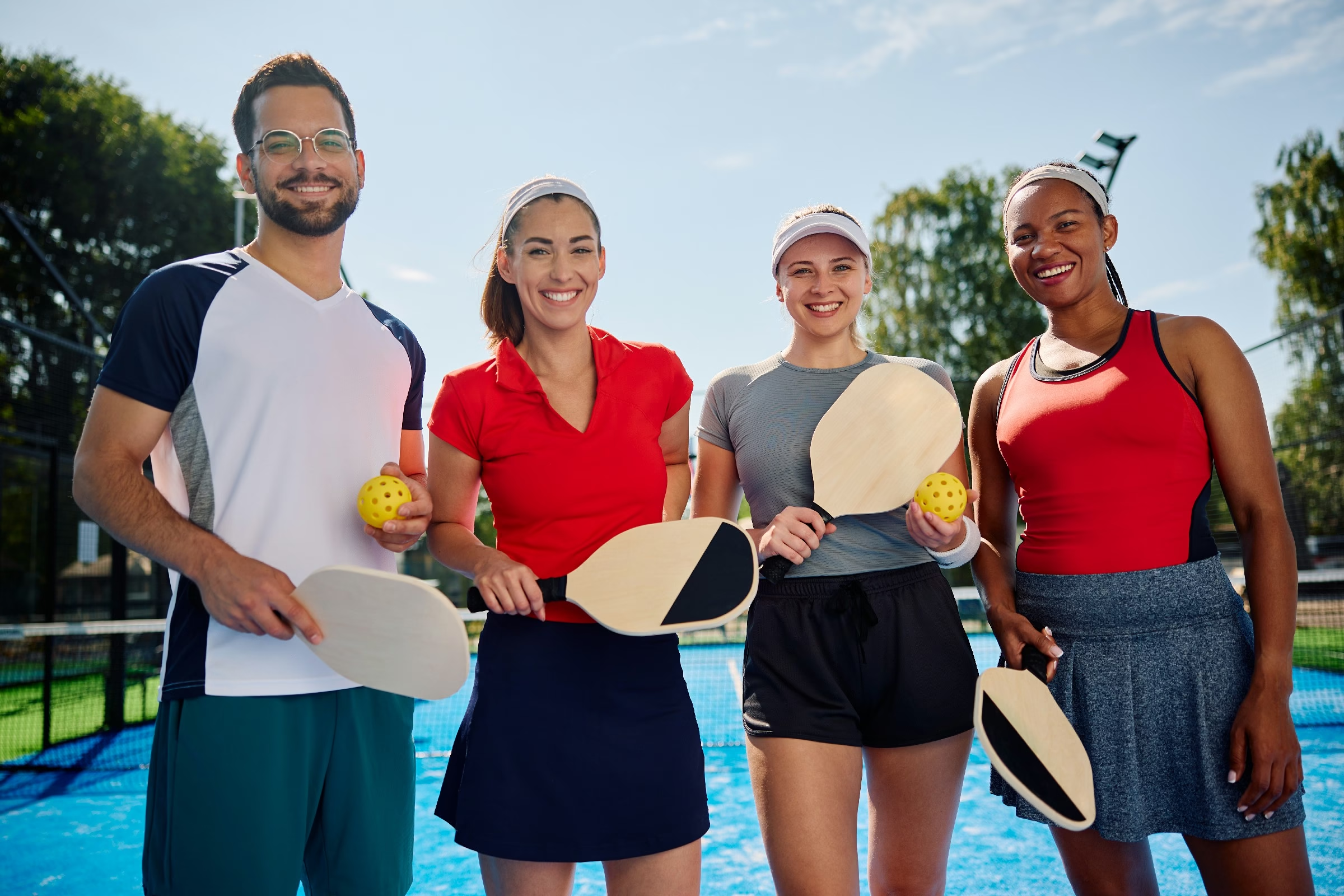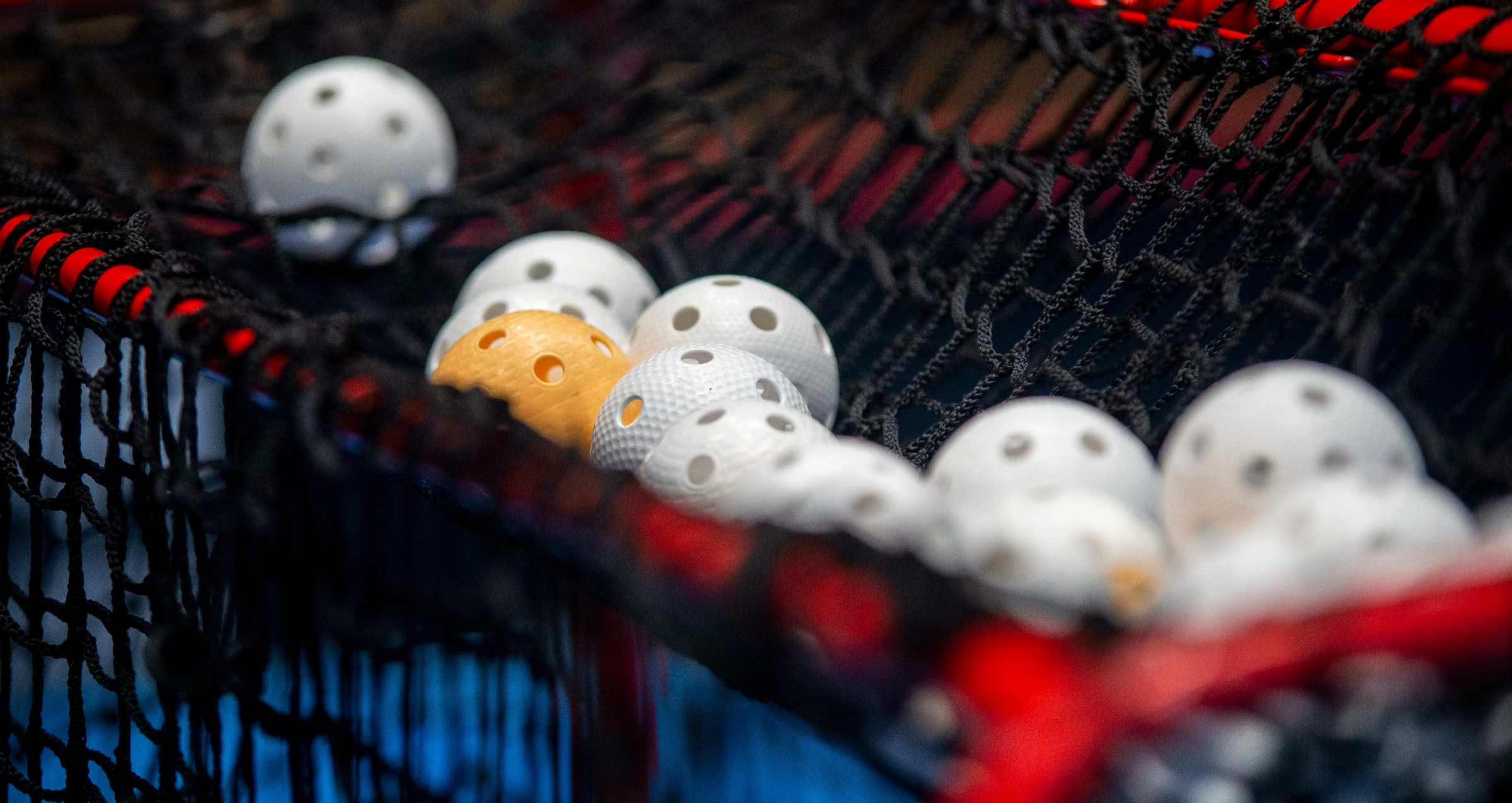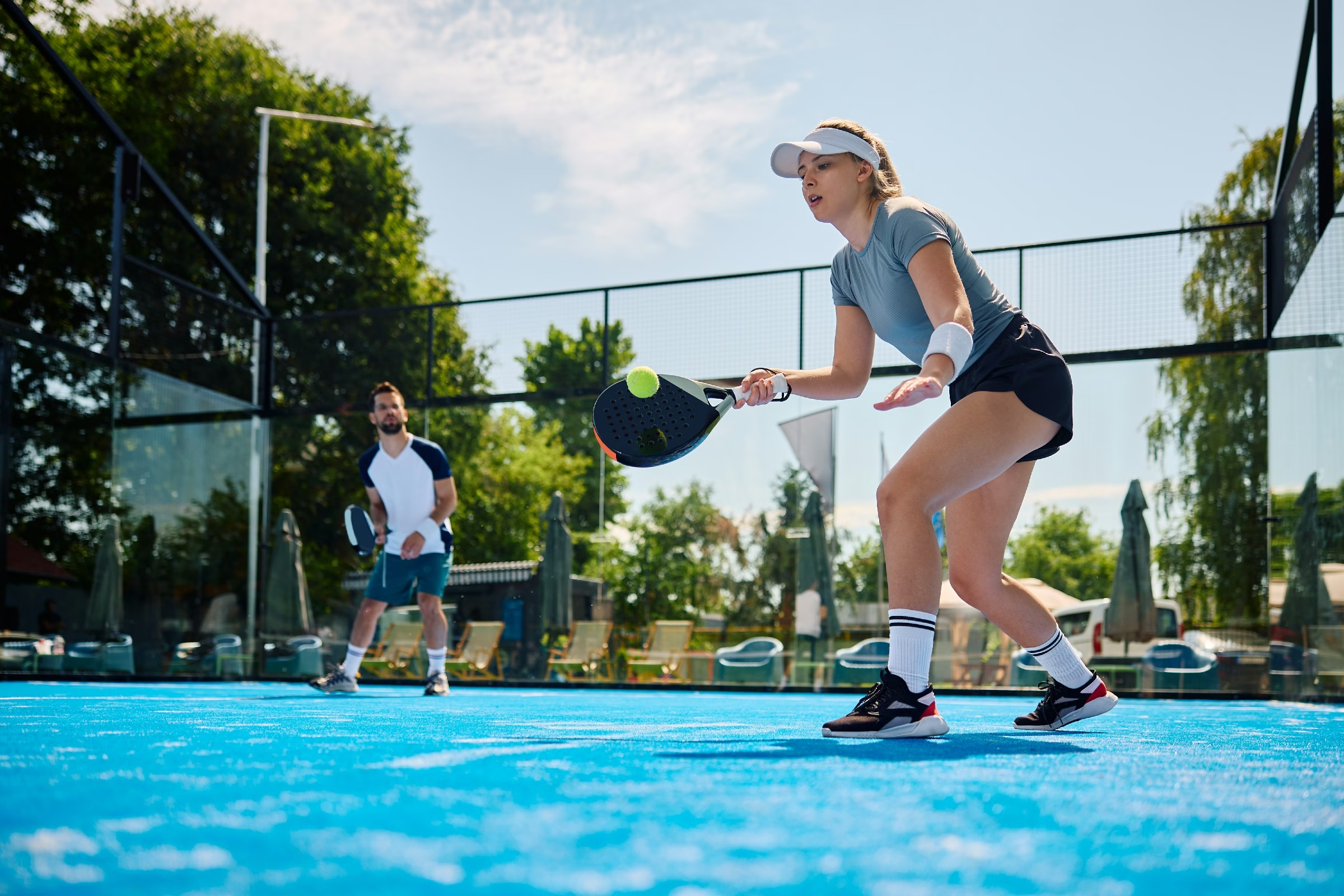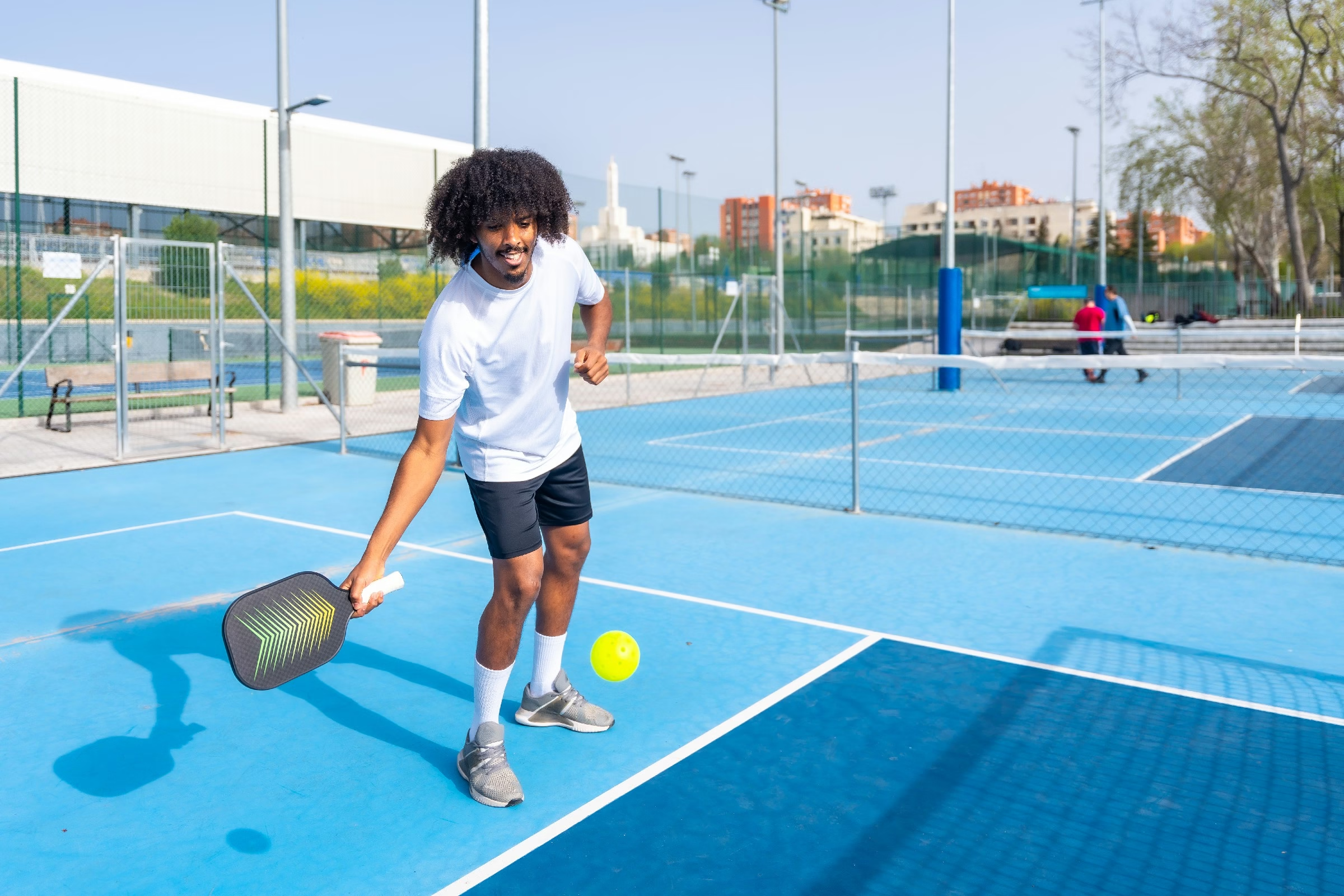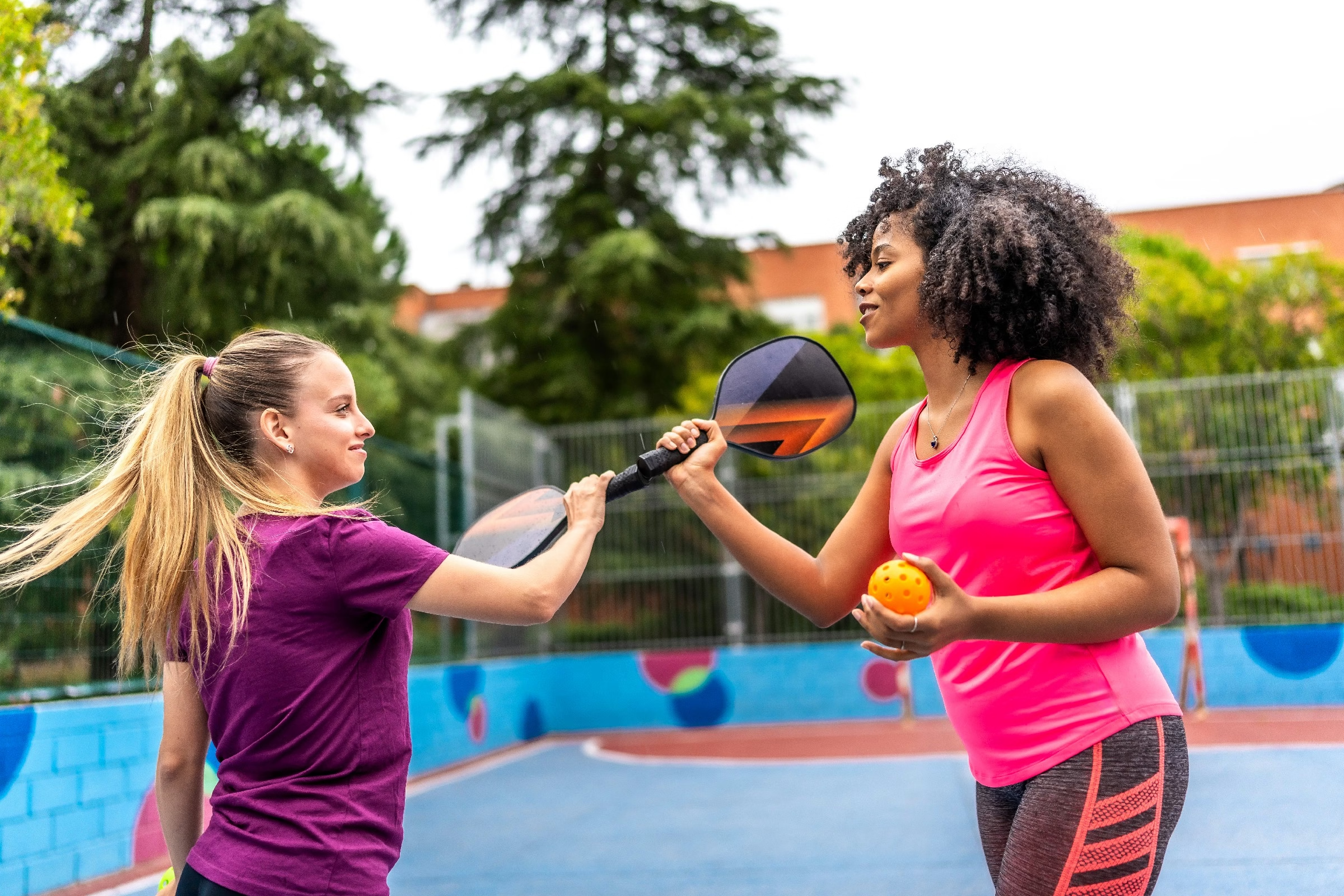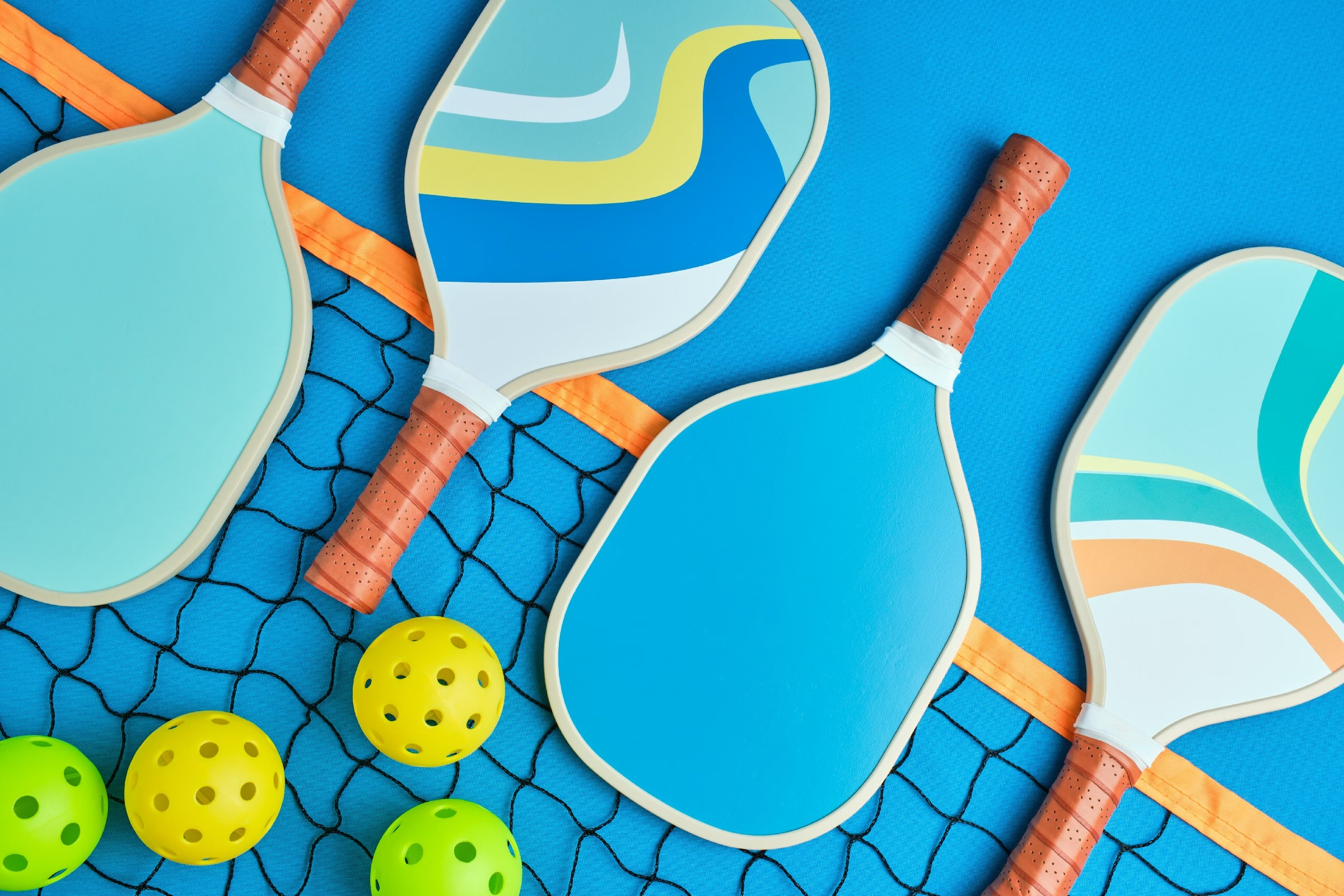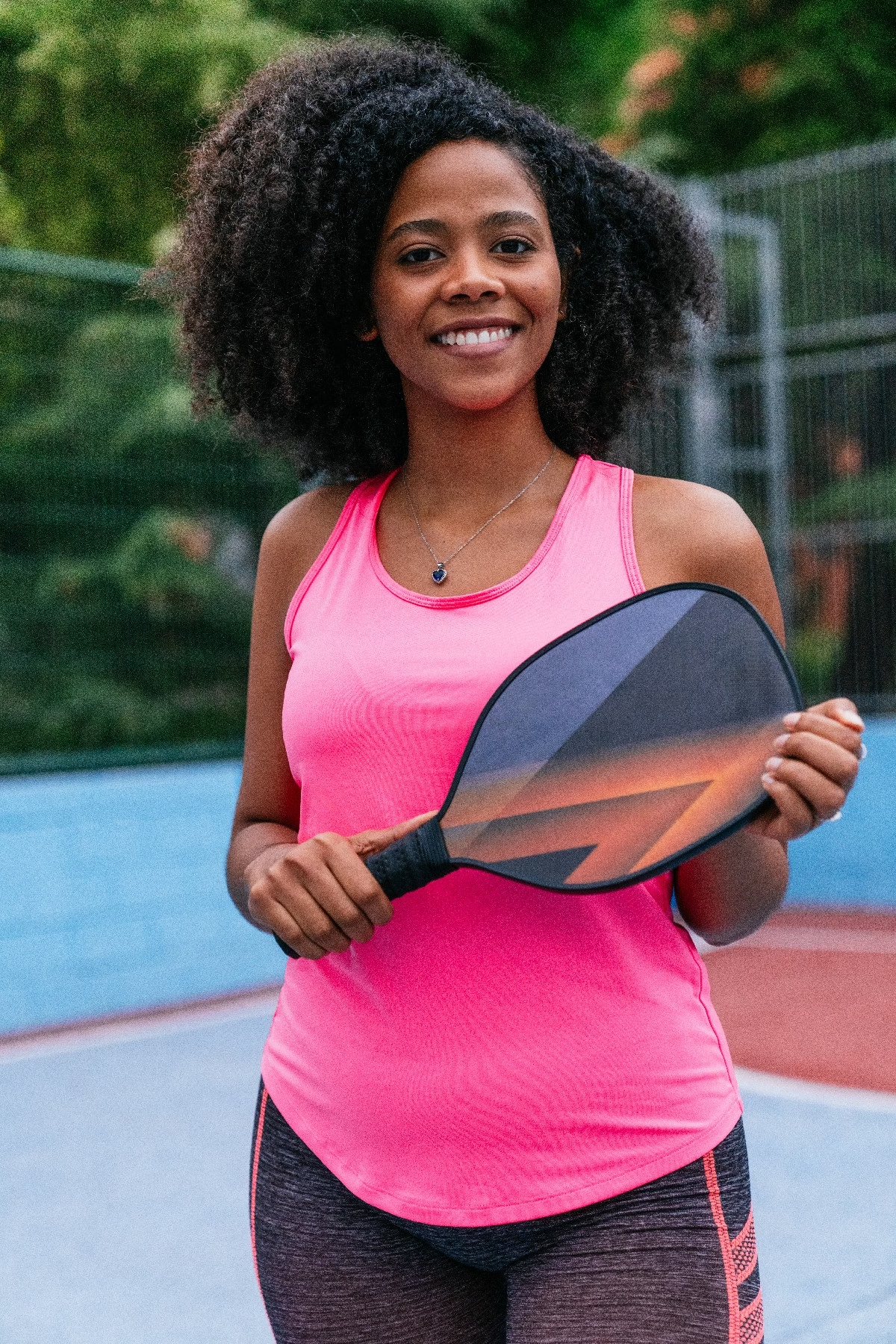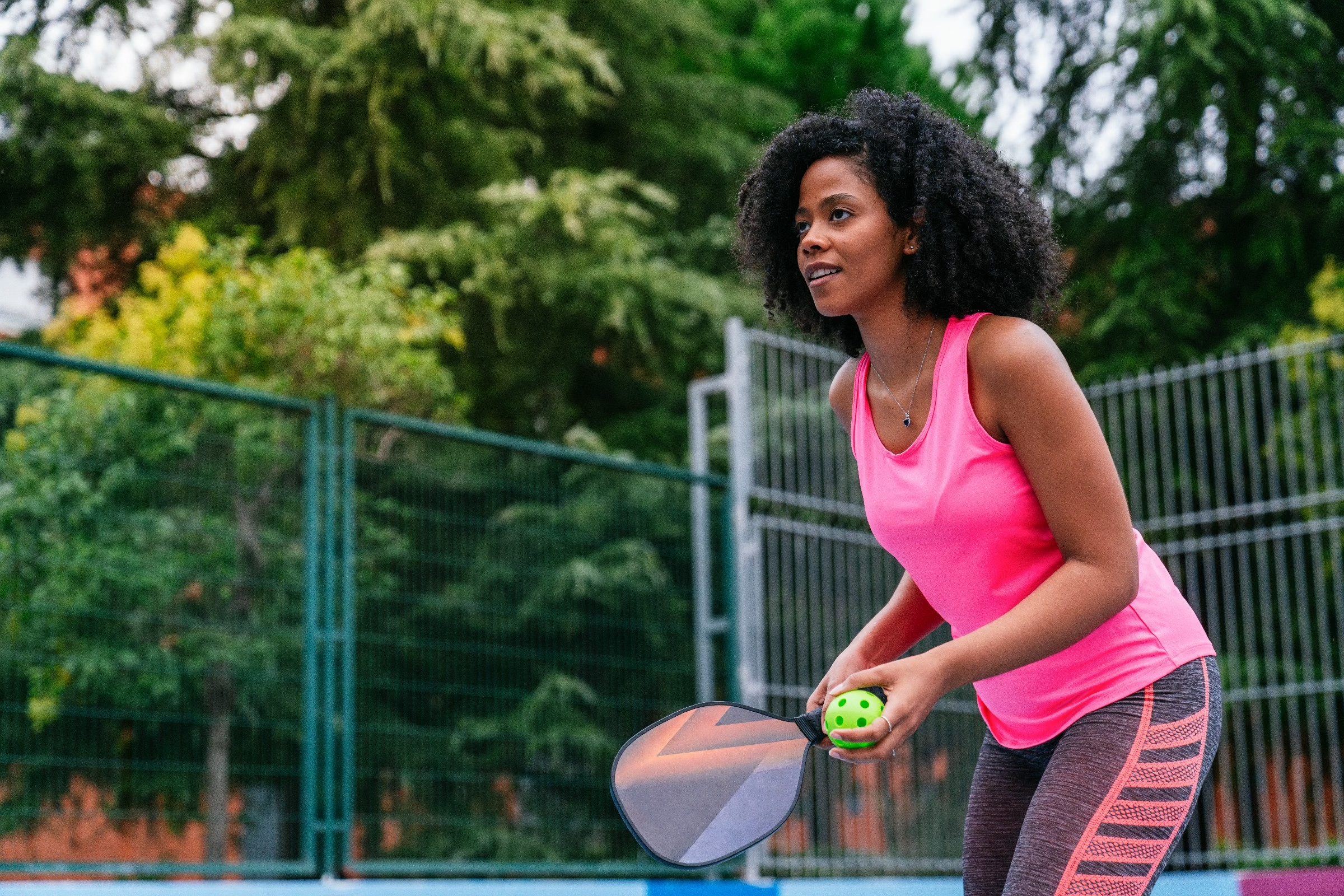Blog
can you use a tennis ball for pickleball
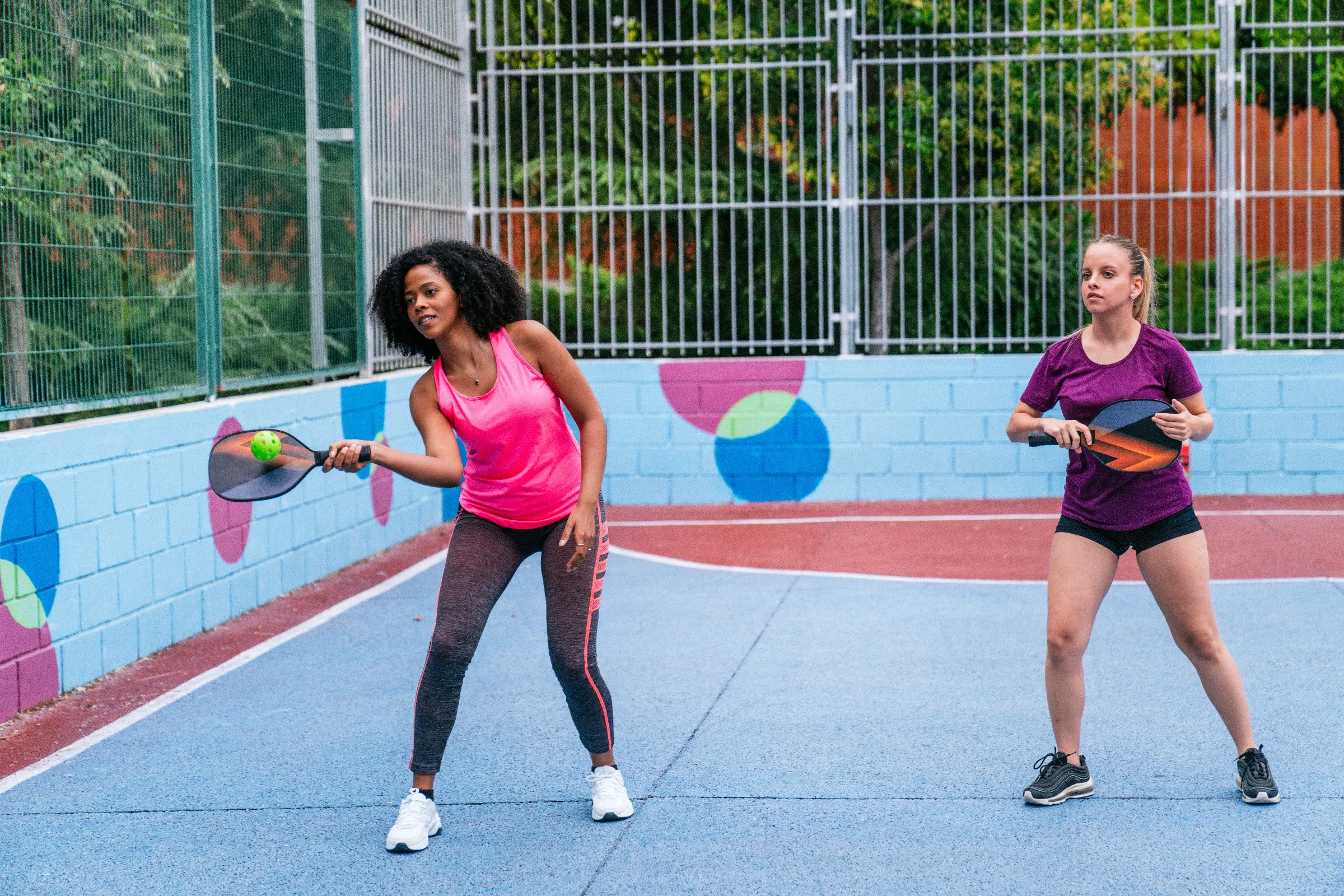
Can You Use a Tennis Ball for Pickleball? Exploring the Intersection of Two Beloved Sports
As the sun casts long shadows over many community courts, two sports beckon players with their unique blend of strategy and physicality: tennis and pickleball. While both games share some common territory, they also possess distinct characteristics that set them apart. But what happens when these two worlds collide? A question frequently enough raised among enthusiasts—whether seasoned or novice—is: Can you use a tennis ball for pickleball? This article delves into the nuances of each game,examining the feasibility and implications of substituting one ball for the other. join us as we explore the intricacies of equipment, gameplay, and the rich culture surrounding these racquet sports. whether you’re a die-hard pickleball player or a tennis aficionado curious about the crossovers, let’s unravel this intriguing query together.
Table of Contents
- Exploring the Compatibility Between Tennis Balls and Pickleballs
- Understanding the Unique Design features of Pickleballs
- Performance Differences: How Tennis Balls Stack Up Against Pickleballs
- When Using a Tennis Ball Could Enhance Your Pickleball Game
- Recommendations for Transitioning from Tennis to Pickleball
- Conclusion: Making Informed choices for Your Playing Experience
- Q&A
- Future Outlook
Exploring the Compatibility Between Tennis Balls and Pickleballs
When considering the use of a tennis ball for pickleball, it’s essential to recognize the fundamental differences between the two sports. While both utilize a similar premise of striking a ball over a net,the design,materials,and gameplay experience diverge considerably. Tennis balls are crafted from a felt exterior that enhances durability and spin, whereas pickleballs are hard plastic with holes, allowing for unique flight patterns and bounce behaviors. These inherent differences play a critical role in how each ball interacts with the paddle and court surface.
In practical terms, employing a tennis ball in a pickleball game can lead to some unexpected outcomes. Players may find that the bounce of a tennis ball is higher and more unpredictable,challenging gameplay dynamics. Additionally, the weight and feel of a tennis ball can alter paddle control, making it less suited for precision shots typical in pickleball.Hear are some factors to consider:
- Bounce Height: Tennis balls typically bounce higher than pickleballs.
- Weight: Tennis balls are heavier,which can impact swing speed and control.
- Durability: While tennis balls are durable, they can wear quickly on rough court surfaces used in pickleball.
| Feature | Tennis ball | Pickleball |
|---|---|---|
| Material | Felt-covered rubber | Plastic with holes |
| Bounce Type | High and springy | Lower, controlled |
| Game Speed | Fast-paced | Variable |
Even though some casual players might experiment with tennis balls during pickleball sessions, understanding these contrasts is vital for both enjoyment and performance. The specific characteristics of each ball contribute to their respective games’ strategic plays and atmosphere. Therefore, while it’s technically possible to use a tennis ball on the pickleball court, doing so may not enhance the experience and might even hinder your overall enjoyment of the game.
Understanding the Unique Design Features of Pickleballs
Pickleballs are distinctively designed to enhance gameplay, allowing for a unique experience that sets them apart from other sports balls, such as tennis balls. One of the most notable features is their hollow polymer construction, which contributes to their lighter weight and distinctive bounce. Unlike tennis balls, which are covered in felt and built to withstand high-impact strikes, pickleballs rely on their smooth surface for a different kind of interaction with both the paddle and the playing surface. This makes them easier to control and manipulate during play,increasing the skill ceiling for players of all levels.
another critically important aspect of pickleballs is their perforated design.The small holes around the surface greatly influence how the ball travels through the air, affecting both speed and spin. This feature allows players to execute unique shots that may not be possible with a customary tennis ball. When struck, a pickleball produces softer sounds and has a softer touch, making the game feel more refined. The holes also minimize the wind resistance during outdoor play, thus allowing for a more predictable trajectory even in breezy conditions.
When examining the size and weight, pickleballs are generally larger and lighter than tennis balls, weighing about 0.8 ounces (22.7 grams), compared to a tennis ball’s approximately 2.1 ounces (59.4 grams). The official dimensions of a pickleball play a critical role in how the game unfolds. The table below summarizes the key attributes:
| Feature | Pickleball | Tennis Ball |
|---|---|---|
| Weight | 0.8 oz (22.7 g) | 2.1 oz (59.4 g) |
| Diameter | 2.87 in (7.3 cm) | 2.7 in (6.86 cm) |
| Surface | Smooth, plastic | Felt-covered |
With these unique design elements, pickleballs are not just a different athletic equipment choice; they reshuffle the dynamics of the game itself. Each component—from material to size—plays a pivotal role in shaping gameplay strategies and player interactions. This makes choosing the correct ball crucial for an authentic pickleball experience, as a tennis ball simply cannot replicate these specialized characteristics.
Performance Differences: How Tennis Balls Stack Up Against Pickleballs
When comparing tennis balls to pickleballs, several key characteristics come into play that can affect game performance. Tennis balls are designed for high-speed play, featuring a fluffy exterior that contributes to their ability to bounce high and travel quickly through the air. This results in a dynamic game where speed and power dominate. In contrast, pickleballs are constructed with a hard plastic shell and perforations, giving them a lower bounce and a different behavior when hit. This design influences the way players strategize and engage with their opponents on the court.
The weight and size of the balls also significantly impact gameplay. A standard tennis ball weighs between 56.0 to 59.4 grams and has a diameter of about 6.7 centimeters, while a pickleball weighs between 22.0 to 26.0 grams with a diameter of 7.3 centimeters. This weight disparity means that players will need to adjust their strokes and swings when switching between the two sports. Here’s a breakdown of these specifications:
| Ball Type | Weight (grams) | Diameter (cm) |
|---|---|---|
| Tennis Ball | 56.0 - 59.4 | 6.7 |
| pickleball | 22.0 – 26.0 | 7.3 |
Additionally, the bounce height and spin capabilities of each ball can alter how games are played. Tennis balls can achieve meaningful bounce heights due to their pressurized cores, enabling a swift and aggressive style of play. Pickleballs, on the other hand, possess unique characteristics that allow them to glide through the air with a more controlled spin. Players accustomed to tennis may notice stark differences in ball handling and must adapt their techniques when opting for a pickleball game. Understanding these performance differences is essential for transitioning between wielding a tennis racket and a pickleball paddle.
When Using a Tennis Ball Could Enhance Your pickleball Game
Integrating a tennis ball into your pickleball practice can offer several unexpected benefits.While pickleball is typically played with a specific type of ball designed for the sport, using a tennis ball can help players work on their hand-eye coordination, reaction time, and overall agility. The larger size and bouncier nature of a tennis ball often require players to adjust their strokes and positioning,which can lead to a more dynamic and engaging practice session.
Here are some notable advantages of using a tennis ball to enhance your skills:
- Improved Reaction Time: the added bounce and speed of a tennis ball can train players to react more quickly, as they must adapt to the increased pace.
- Enhanced Footwork: The larger diameter of the tennis ball encourages better foot positioning and movement, promoting agility and rapid decision-making on the court.
- Varied Gameplay: Incorporating a tennis ball can introduce new challenges, making practice sessions more enjoyable and less repetitive.
Players may also find that using a tennis ball allows them to experiment with different strategies and shot techniques. Incorporating some drills can further enhance the experience. For example, you might try the following:
| Drill | Description |
|---|---|
| Baseline Rally | Practice rallying with a partner using a tennis ball to develop consistency and control. |
| Volley Drills | Focus on quick volleys and reflexes by having a partner toss the tennis ball for intercepting. |
| Target Practice | Set up targets on the court and aim to hit them with the tennis ball, honing accuracy. |
Recommendations for Transitioning from Tennis to Pickleball
Transitioning from tennis to pickleball can be an exciting journey, especially considering the differences in equipment and gameplay dynamics. For starters, it’s essential to familiarize yourself with the rules and dimensions unique to pickleball.The court size is smaller, and the net is lower, which impacts your play strategy. Practicing on a pickleball court will allow you to adapt to the fast-paced nature of the game and refine your footwork.
Your racket choice is another critical aspect of this transition. While tennis players typically use a heavier racket, pickleball paddles are lighter and made of different materials. This change can significantly affect your swing and shot placement.Consider the following tips for selecting your new paddle:
- Weight: opt for a paddle that feels pleasant in your hand.
- grip size: Ensure the grip fits your hand for better control.
- Material: Experiment with different materials like wood, composite, and polymer for optimal performance.
engaging in practice drills that target the specific skills used in pickleball can smooth your transition. Focus on developing your serve, dinks, and volleys, as these are crucial skills unique to the game. Participating in local pickleball clubs is also beneficial, as it provides the chance to play with seasoned players. Consider checking out this simple comparison of essential pickleball skills and their tennis equivalents:
| Skill | Pickleball | Tennis |
|---|---|---|
| Serve | Underhand and overhand | Overhead only |
| Dink | Soft shot into the kitchen | N/A |
| Volley | Close to the net | Any position |
Conclusion: Making Informed Choices for Your Playing Experience
In navigating the world of pickleball, especially regarding the equipment you choose, it’s vital to weigh your options carefully. Many players may wonder if a standard tennis ball can effectively replace a dedicated pickleball. The truth lies in understanding the distinct properties of each ball, including their size, weight, and material. A tennis ball, while bouncy and familiar, presents challenges that can disrupt the game uniquely suited for pickleball.
Key Differences:
- Size & Weight: Pickleballs are generally larger and lighter than tennis balls, affecting how they play and how players react.
- Bounce Characteristics: The lower bounce of a pickleball is designed for the court’s dimensions, allowing for strategic play, unlike the higher bounce of a tennis ball.
- Material Composition: The solid plastic exterior of a pickleball encourages specific spin and control that a fuzzy tennis ball cannot replicate.
Ultimately, making the right choice involves considering your playing habitat and style. If you’re on a budget or just starting out,using a tennis ball may seem like a convenient stopgap; however,investing in proper pickleball equipment will enhance your overall experience. For serious play or even casual matches, the benefits of using the right ball become evident, as they offer better control, consistency, and engagement with the game.
Q&A
Q&A: Can You Use a Tennis Ball for Pickleball?
Q1: What is pickleball?
A1: Pickleball is a paddle sport that combines elements of tennis, badminton, and ping-pong. It’s played on a court similar to a tennis court, but smaller, with a net that’s slightly lower. The game is known for its accessibility, making it popular among all age groups.
Q2: Can I use a tennis ball when playing pickleball instead of a pickleball?
A2: Technically, you can use a tennis ball to play pickleball, but it’s not recommended. The two balls are designed with different properties in mind. Pickleballs are larger, lighter, and have a distinctive hole pattern that affects how they bounce and fly through the air. A tennis ball, being denser and heavier, alters the dynamics of the game significantly.
Q3: What are the main differences between a tennis ball and a pickleball?
A3: The main differences include size, weight, and design. A pickleball has a diameter of about 2.87 inches and weighs approximately 0.8 ounces, while a tennis ball is slightly larger at about 2.57 inches in diameter and weighs around 2.04 ounces. Additionally, pickleballs are made of plastic and have holes that affect airflow and bounce, while tennis balls are made of rubber, covered with felt, leading to a different speed and bounce.
Q4: How does using a tennis ball impact gameplay?
A4: Using a tennis ball can significantly alter the dynamics of the game. Due to its weight and bounce, the ball will travel faster, making it harder to control, especially for beginners. The gameplay may become less strategic, as the heavier ball can lead to more power shots rather than the finesse that characterizes traditional pickleball.
Q5: Are there any situations where using a tennis ball might be acceptable?
A5: If you’re in a pinch and don’t have access to a pickleball, using a tennis ball for casual play might be acceptable, especially among friends who are just looking to have fun. However,in official games or tournaments,using a regulation pickleball is mandatory.
Q6: What choice can I consider if I want a different experience in pickleball?
A6: If you’re looking for an alternative experience without straying too far from the essence of pickleball, consider using a softer pickleball or a foam pickleball designed for beginners.These options provide a unique touch while still maintaining the spirit of the game.
Q7: should I stick to a pickleball for pickleball games?
A7: Yes, for the best experience and to adhere to the game’s standards, it’s advisable to use a proper pickleball. Embracing the sport with the right equipment not only enhances your gameplay but also helps in understanding and mastering the unique techniques involved in pickleball. So grab your paddles,and let’s keep it fun and authentic on the court!
Future outlook
while the curiosity of using a tennis ball for pickleball is indeed an interesting proposition,the differences in design,bounce,and gameplay dynamics suggest that it may not be the optimal choice for serious play.While some might enjoy the novelty of incorporating a tennis ball into an informal game with friends, for those looking to experience the sport to its fullest, investing in the appropriate pickleball equipment is wise. Whether you’re a seasoned player or an keen beginner, understanding the nuances of your gear can enhance your skills and enjoyment on the court. So next time you step onto the pickleball court, make sure you’ve got the right ball in hand—one that’s ready to bounce into action!

